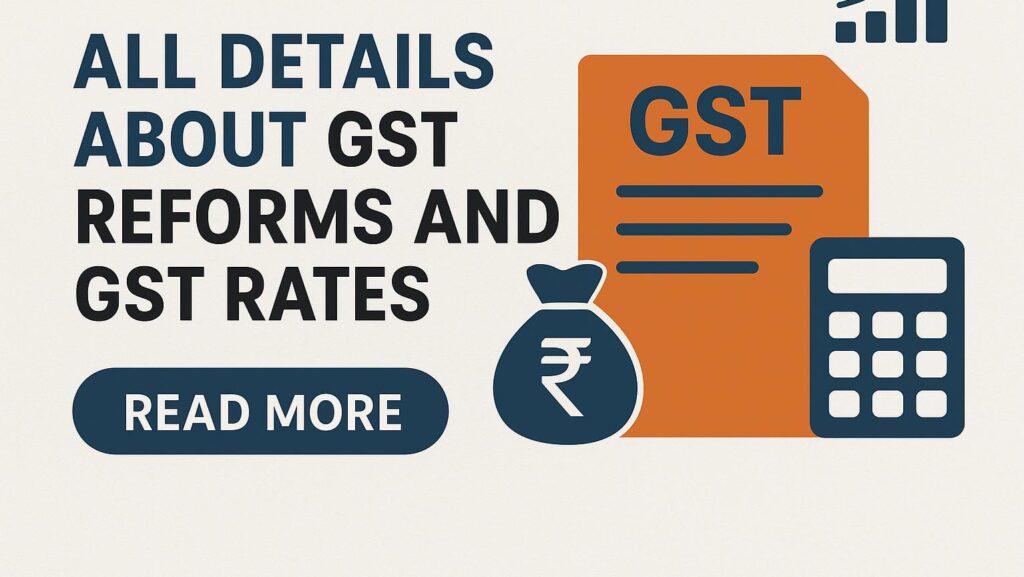
Introduction
The Goods and Services Tax (GST) has been one of the most significant tax reforms in India, streamlining indirect taxation and creating a unified market. Since its introduction in 2017, GST has undergone several reforms to improve compliance, simplify procedures, and boost transparency. In this blog, we’ll cover all details about GST reforms and the latest GST rates in India.
What is GST?
GST is a comprehensive, multi-stage, destination-based tax that replaced multiple indirect taxes like VAT, excise duty, and service tax. It is levied on the supply of goods and services at each stage of the supply chain but allows input tax credit, thereby avoiding the cascading effect of taxes.
Key GST Reforms Over the Years
- Introduction of E-Way Bill (2018)
A digital permit introduced for interstate movement of goods above ₹50,000, improving logistics transparency. - E-Invoicing System (2020 onwards)
Mandated for businesses over certain turnover thresholds, reducing invoice fraud and enhancing data accuracy. - Simplified Return Filing (GSTR-1, GSTR-3B)
Filing processes have been simplified, with auto-generated returns to reduce errors. - Composition Scheme for Small Businesses
Offering lower compliance and tax rates for small taxpayers to ease business operations. - GST Council Reforms
Regular GST Council meetings have rationalized tax slabs, clarified rules, and addressed industry-specific concerns. - Technology-driven Compliance
Integration of AI, data analytics, and GSTN portal updates for fraud detection and ease of filing.
Current GST Rates in India (2025)
GST has a four-tier structure along with some exempt categories:
0% GST (Exempted Goods & Services)
Fresh fruits, vegetables, milk, curd, educational services, healthcare.
5% GST (Essential Goods & Services)
Packaged food, edible oil, footwear (below ₹1,000), train and bus travel, economy-class air tickets.
12% GST (Standard Rate)
Processed food, computers, mobiles, and restaurant services (non-AC).
18% GST (Most Common Rate)
Consumer durables, industrial goods, financial services, telecom, IT services, restaurants (AC/non-alcoholic).
28% GST (Luxury & Sin Goods)
Luxury cars, tobacco products, aerated drinks, and high-end consumer goods.
Recent Updates in GST (2024–25)
GST Rate Rationalization: Discussions on merging the 12% and 18% slabs to simplify taxation.
Higher Compliance for E-Commerce Sellers: New rules for TCS (Tax Collected at Source) to streamline online business taxation.
Input Tax Credit Restrictions: Stricter rules to curb fake invoicing.
Digital Filing Enhancements: Improved GSTN portal with AI-based reconciliation tools.
Impact of GST Reforms
Positive Impacts: Simplified taxation, increased transparency, boosted government revenue, reduced logistics costs.
Challenges: Multiple rate slabs, compliance burden for small businesses, evolving rules creating confusion.
Conclusion
GST continues to evolve as India’s economy grows. With reforms focusing on simplification, digitalization, and transparency, GST is set to become more efficient and business-friendly in the coming years. Staying updated on GST rates and compliance requirements is crucial for every business owner, entrepreneur, and taxpayer.
